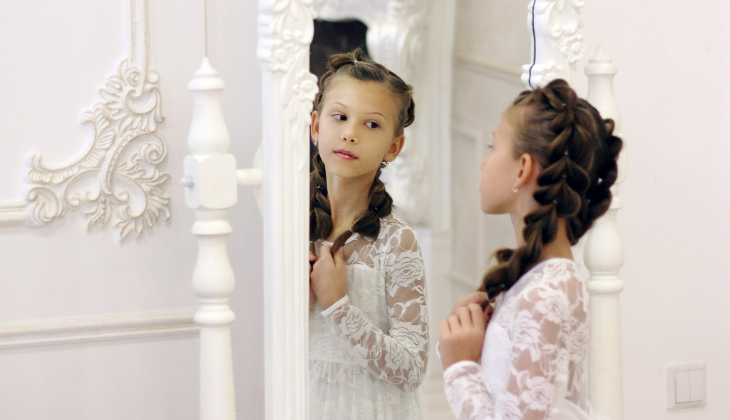


In the vibrant tapestry of childhood, every experience contributes to shaping a child`s identity. While academics, play, and social interactions are crucial aspects, the influence of appearance and personal style often goes underestimated. In this exploration, we delve into the profound psychological impact of dressing well on your child`s confidence and self-esteem, underlining the significance of positive self-expression from an early age.
THE POWER OF PRESENTATION
From a young age, children absorb information from their surroundings like sponges. How they are presented to the world, including how they dress, becomes an integral part of their self-perception. Dressing well isn`t just about donning the latest trends; it`s a powerful tool for cultivating a positive self-image.
When your child feels well-dressed, it sends a powerful message - they matter, their presence is valued, and they deserve respect. This initial boost in self-perception sets the foundation for increased confidence in various aspects of their lives.
BUILDING A POSITIVE SELF-IMAGE
Children, like adults, form judgments about themselves based on how others perceive them. Dressing well becomes a means of self-expression, allowing your child to communicate their personality, interests, and moods. This autonomy in choosing and presenting their outfits fosters a sense of control over their image, contributing to a positive self-image.
Encouraging your child to express their personality through clothing teaches them that their identity is valid and worthy of celebration. As they experiment with different styles, they learn to embrace diversity and develop a keen understanding of personal preferences.
THE PSYCHOLOGY OF COLORS AND STYLES
The choices we make in clothing extend beyond mere fabric and patterns; they delve into the realm of colors and styles, each carrying psychological significance. Vibrant colors can evoke joy and energy, fostering a positive mindset, while muted tones may promote a sense of calm and tranquility.
Little English, a renowned children`s clothing brand, understands the importance of colors and styles in children`s fashion. Their delightful collection captures the essence of childhood and offers a range of colors and designs that allow children to express themselves authentically.
CONFIDENCE THROUGH POSITIVE FEEDBACK
Positive reinforcement plays a crucial role in the development of confidence. When your child receives compliments on their well-chosen outfits, it reinforces the idea that their efforts are noticed and appreciated. This positive feedback loop contributes to a growing sense of self-worth and confidence.
Encouraging compliments isn`t about fostering vanity; rather, it`s about instilling a belief that effort and self-expression are valuable. When a child learns that their choices can elicit positive responses, it motivates them to continue making thoughtful decisions in various aspects of their lives.
INTERNAL EMPOWERMENT
While external validation can boost confidence, the ultimate goal is to nurture internal empowerment. Dressing well becomes a personal ritual that fosters a sense of pride and accomplishment within your child. As they learn to appreciate their appearance, they cultivate a resilient self-esteem that isn`t solely dependent on external opinions.
Teaching your child that dressing well is an act of self-care instills the idea that they are worthy of investing time and effort into themselves. This internal empowerment becomes a valuable resource as they navigate the challenges of adolescence and adulthood.
DRESSING FOR SUCCESS IN LEARNING
The impact of dressing well extends beyond personal confidence and infiltrates the academic sphere. Studies have shown that there is a correlation between self-esteem and academic performance. When a child feels good about themselves, they are more likely to approach challenges with a positive mindset, leading to improved focus and learning outcomes.
Encouraging your child to dress well for school sends the message that education is a valuable endeavor worthy of respect and attention. This approach fosters a positive attitude toward learning, transforming the classroom into a space where personal growth and success are achievable and celebrated.
PRACTICAL TIPS FOR ENCOURAGING FASHIONABLE LEARNING
1. Involve Your Child in Clothing Choices
Encourage your child to actively participate in selecting their outfits, including exploring the diverse and adorable collections offered by Little English for both boys & girls.
2. Teach the Importance of Grooming
Instill good grooming habits in your child with the understanding that looking good is a form of self-respect.
3. Celebrate Individuality
Embrace and celebrate your child`s unique style, ensuring they feel confident expressing themselves authentically.
4. Offer Positive Reinforcement
Acknowledge and compliment your child when they make thoughtful clothing choices, reinforcing that their efforts are noticed and appreciated.
5. Create Theme Days
Make getting dressed a fun and creative experience by introducing theme days. Whether it`s a color theme or a favorite character day, this adds an element of excitement to the process.
In the vibrant fabric of childhood development, the thread of personal style weaves a narrative of confidence, self-expression, and positive self-image. Dressing well becomes a form of empowerment, a tool through which children learn to navigate the world with resilience, creativity, and a sense of their inherent worth. As you guide your child through the exciting journey of fashionable learning, remember that each outfit is not just a piece of fabric; it`s a brushstroke in the masterpiece of their evolving identity, a masterpiece that Little English helps craft with style and timeless charm.